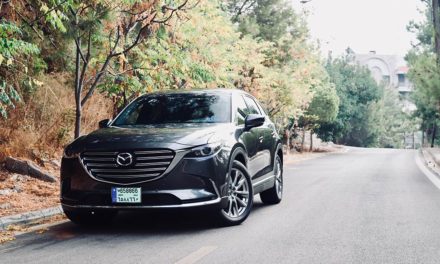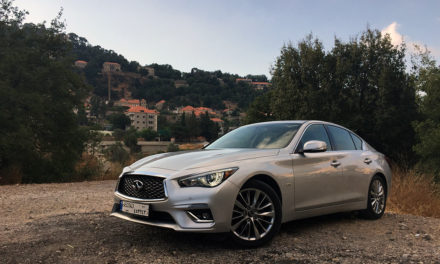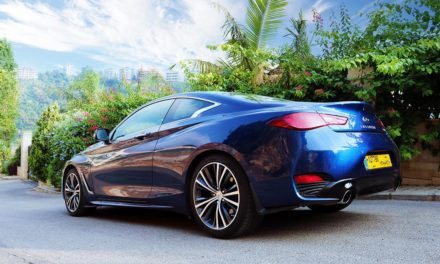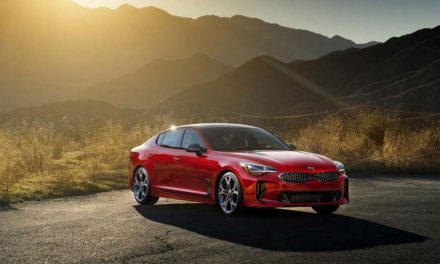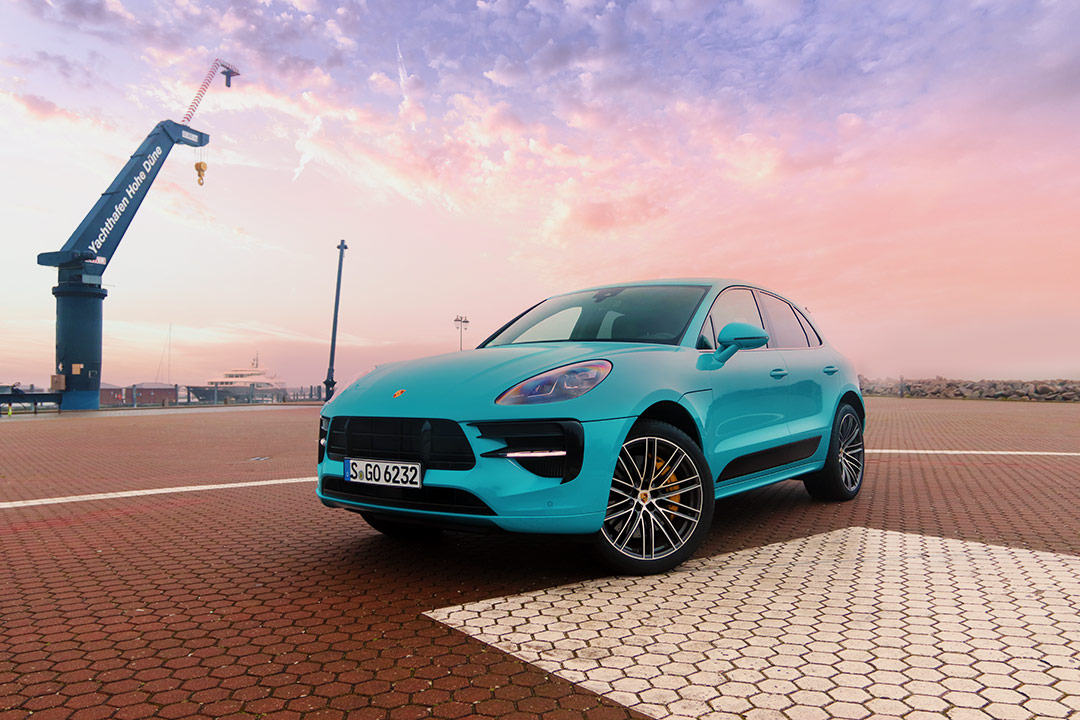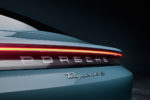Aventador Gets New Lease On Life With Radical Refresh
K
FAR DHEBIAN, Lebanon: I’ve had a passion for automobiles ever since I was a toddler. It started with die-cast toys, and I later found myself buying every car magazine I could get my hands on to gawk at pictures of all the latest exotics – this was when there was still no such thing as the internet. And when I couldn’t get my car fix from magazines, I drew them – in notebooks, schoolbooks, on the surface of my desk and, to my mom’s horror, on my bedroom walls.
It also didn’t help that my dad had the same soft spot for cars, as did many other people in my family and some of my closest friends.
There came a point, however, when I stopped admiring cars merely for their stunning looks and instead began recognizing their merits and flaws in terms of performance, engineering and construction, in addition to styling. And all of a sudden, my love affair with cars was narrowed down to a single marque: Porsche. Over the years cars came and went, and few seemed as tantalizing or as desirable as the ever-mighty 911. Until 2011.
That’s when I discovered the Lamborghini Aventador, and suddenly I had a new love interest. I couldn’t stop marveling at this magnificent creation that not only boasted all the exoticism of the Italians and featured a delightfully massive V-12 engine, but it also had superb engineering and a cutting-edge carbon-fiber chassis.
“The Aventador remained the brute it was designed to be – hard to control and determined to kill its driver”
I quickly studied up on the manufacturing process, from the way the sheets were cut and how they were placed in the molds to being fed into the autoclave before being assembled and transformed into the ultimate handmade supercar.
And, of course, the fact that it was engineered by Audi, whose all-wheel-drive capabilities are by now legendary, was the icing on the cake.
But that was six years ago, and in that time the industry has changed. We’ve seen the advent of hypercars like the McLaren P1, the Ferrari LaFerrari, the Porsche 918 Spyder, the Paganis and the Koneigseggs to name a few. We’ve also seen manufacturers taking the turbocharger route and reducing engine capacity, including in Formula One, and it seems dual-clutch transmissions have become the norm.
Meanwhile, the Aventador remained the brute it was designed to be – hard to control and determined to kill its driver at the slightest provocation, much like its predecessors.
This would usually be the point when a manufacturer retires a car and introduces a fresh model, but not Lamborghini. Instead of scrapping its flagship model, the brand decided to not only revitalize the Aventador, but made it a great deal more alluring then anyone could have ever imagined.
Enter the Aventador S, the zenith of automotive makeovers and a testament to Lamborghini’s ingenuity.
Even in appearance the new car looks dramatically different. The nose styling with its shark fangs is far more aggressive, the tail a great deal more elaborate – including its hexagonal exhaust – and the treatment of the rear wheel arches is an unmistakable nod to the legendary Countach. But all that styling isn’t for show, because Lamborghini’s efforts have improved aerodynamic efficiency by 50 percent, while downforce has increased by a whopping 130 percent.
But all that is just the surface of the incredible transformation that has been wrought on this car because, while it has refused to abandon its heritage, it has taken several evolutionary steps forward.
I should establish at this point that the Aventador is one the last true normally aspirated supercars with a V-12 engine (shame on you, Porsche). That means when you floor the throttle and rip down the road in this magnificent beast there’s the symphony of its 6.5-liter 12-cylinder orchestra overwhelming your senses without being marred by the intrusive whine of turbochargers.
And yet Lamborghini has managed to add another 40 ponies to the horsepower produced by that engine, resulting in a stampede of 730 stallions that take this car from zero to 100 kilometers in 2.9 seconds and a top speed of 350 kph. Hello hypercar! I’m guessing not many will dare take this bull by the horns, let alone defeat it.
Moreover, while a double-clutch transmission may be much smoother, if handled correctly the Aventador S’ single clutch feels more intimate, its jarring shifts becoming a comforting accompaniment to its no-nonsense attitude. I’ve said many times I’ll take a car that affords a direct connection with the driver over impersonal obedience every day of the week, and this is a perfect example.
Even in appearance the new car looks dramatically different. The nose styling with its shark fangs is far more aggressive, the tail a great deal more elaborate – including its hexagonal exhaust – and the treatment of the rear wheel arches is an unmistakable nod to the legendary Countach. But all that styling isn’t for show, because Lamborghini’s efforts have improved aerodynamic efficiency by 50 percent, while downforce has increased by a whopping 130 percent.
But all that is just the surface of the incredible transformation that has been wrought on this car because, while it has refused to abandon its heritage, it has taken several evolutionary steps forward.
I should establish at this point that the Aventador is one the last true normally aspirated supercars with a V-12 engine (shame on you, Porsche). That means when you floor the throttle and rip down the road in this magnificent beast there’s the symphony of its 6.5-liter 12-cylinder orchestra overwhelming your senses without being marred by the intrusive whine of turbochargers.
And yet Lamborghini has managed to add another 40 ponies to the horsepower produced by that engine, resulting in a stampede of 730 stallions that take this car from zero to 100 kilometers in 2.9 seconds and a top speed of 350 kph. Hello hypercar! I’m guessing not many will dare take this bull by the horns, let alone defeat it.
Moreover, while a double-clutch transmission may be much smoother, if handled correctly the Aventador S’ single clutch feels more intimate, its jarring shifts becoming a comforting accompaniment to its no-nonsense attitude. I’ve said many times I’ll take a car that affords a direct connection with the driver over impersonal obedience every day of the week, and this is a perfect example.
With that out of the way, let’s now look at the genius. One area where the first Aventador suffered was handling, in that it was clumsy and understeered to the great horror of its occupants. For a car of this size and with such power – 690 horsepower at the time – it would obviously be a concern when a wall is approaching rapidly at over 300 kilometers and the car refuses to turn.
The Aventador S resolves that problem with panache. Cars with a short wheelbase tend to be more agile but less stable at speed, whereas cars with a longer wheelbase fly true as arrows on straights but handling leaves much to be desired. The Aventador, unfortunately, has a 2.7-meter wheelbase, which would seem to present a problem.
But the folks at Lamborghini did some serious outside-the-box thinking and instead of compromising on stability, they found a far more graceful solution to the dilemma.
All four of the Aventador S’ wheels now steer, and the result is nothing less than astonishing. Believe it or not, steering this car at speed is now as easy as handling a 2-Series BMW. I had read about it, but it was only after I tried the car for myself did I realize what a dramatic effect four-wheel-steering had on this mid-engine beast. Combine that with the Aventador’s already existing four-wheel-drive and its four-wheel active suspension, and this car may very well have some of the best handling I’ve ever experienced. Hats off to its engineers.
And since we’re talking about fours, there’s a fourth masterpiece. Whereas the original Aventador featured three drive modes – Strada for street, Sport for, well, sport driving, and Corsa for the track, now there is another: Ego.
If ever there was a setting every driver wanted in his car, this is it. Each of the other settings have predefined parameters, with ride quality becoming increasingly more compromised as the car takes on a more aggressive demeanor, whether in terms of response, performance or handling.
Ego offers you the option of picking and choosing what works best for you. If you want to retain ride quality while improving response, you got it. Any other combination? You got that too. It’s the ultimate form of giving you your money’s worth, and you better be getting it since this baby costs a whopping $616,000 before registration but including value added tax. It’s 11 percent now by the way, so the car costs an extra $6,000, in case you thought 1 percentage point was a trivial thing, and places the Aventador another $6,000 away from your reach because of the raises the public sector got, in case you were saving up to buy one.
Another point worth mentioning is the ground clearance. While both the Aventador and the Huracan come equipped with a feature that elevates the car to more easily clear road protrusions such as bumps and whatnot, I found that the Aventador’s clearance was a great deal more accommodating, even without resorting to the lift mechanism. In fact, it never scraped anything, not even once, whereas I found myself panicking every time I approached a bump in the Huracan.
Also, you should know that if you drive this car, people will want to take pictures beside it every time you stop. But I suppose that’s understandable considering nothing about the Aventador is understated. If ever there was a car that was designed to turn heads, this is it, whether you’re talking about the scissor doors, the wedge-shaped styling, the low roofline and wide track, the growl of the 12-pot or the fact that the example I drove was matte yellow. Man, when they said Ego, they weren’t kidding.
For the long read on how we sharpened our videography teeth on the Aventador S, CLICK HERE
A version of this article appeared in the print edition of The Daily Star on September 1, 2017.

